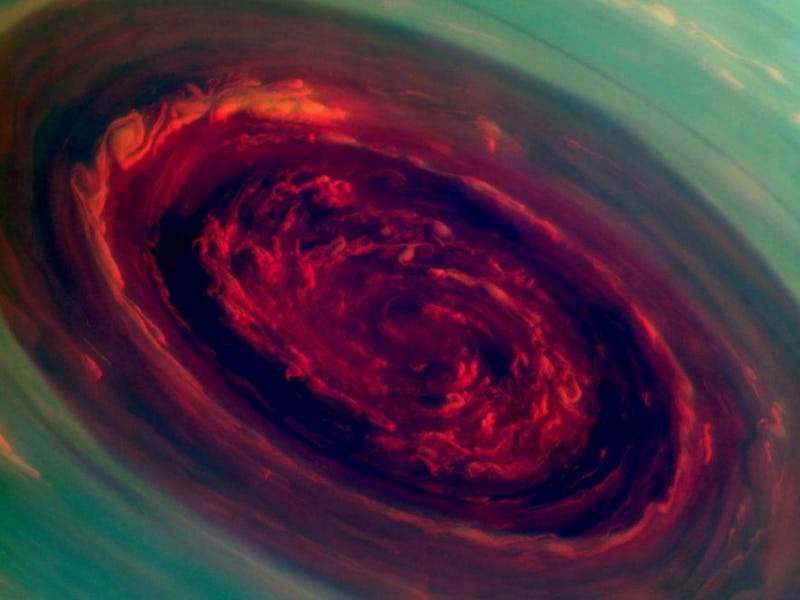We Might Finally Understand the Hurricanes in Saturn's "Hexagon" Storm

Saturn is a beautiful planet that makes little to no sense. It has kittens, a shitload of rings, and, of course, a massive hexagonal hurricane on its North Pole. Jet streams give the storm its unusual shape, but the mechanics of what’s going on inside is potentially even more fascinating — and enigmatic.
A new study published Monday in Nature Geoscience suggests scientists might have some answers on the monster hurricane hiding within Saturn’s hexagon. Using some seriously unorthodox methods — namely, a giant rotating water tank — the team was able to assert some interesting new ideas about Saturn’s polar hurricanes.
Join our private Dope Space Pics group on Facebook for more strange wonder.
“Very little is known about convection and vortices in the deep atmospheres of gas giants Saturn and Jupiter,” the study’s lead author Yakov Afanasyev, a professor of experimental oceanic and atmospheric fluid dynamics at Memorial University of Newfoundland, tells Space.com. “Our current understanding is based on theories and quite idealized computer simulations, which do not yet approach the parameters of the real planetary atmospheres.”
To replicate the transfer of heat in Saturn’s atmosphere — a process called convection — the team heated the bottom of a 43-inch (110 cm) tank full of water. The researchers write that as the tank “spun on a rotating table,” warm water rose to the top and cold water from the surface sunk. These created tiny vortices similar to the ones found on Saturn’s poles.
The Storm Is Large.
The thing is, some of these polar hurricanes can grow to become unreasonably large. One of these polar cyclones — first spotted back in 2013 — had an eye 1,250 miles (2,000 kilometers) wide, which is about 20 times larger than the average hurricane eye on Earth. Researchers on this study say it’s possible these monster hurricanes at the poles could be the result of smaller hurricanes merging.
“We were trying to make water more turbulent by heating it and see how it behaves in the rotating tank, which simulates the rotation of the planet,” Afanasyev tells Space.com. “No experiment, or computer model for that matter, can model an ocean or atmosphere of a planet in all their complexity. What we can do is to model the essential dynamics.”
While there’s still a lot more investigating to be done, at least we can all stare at glorious pictures of Saturn’s storms and feel a little less confused — for now.